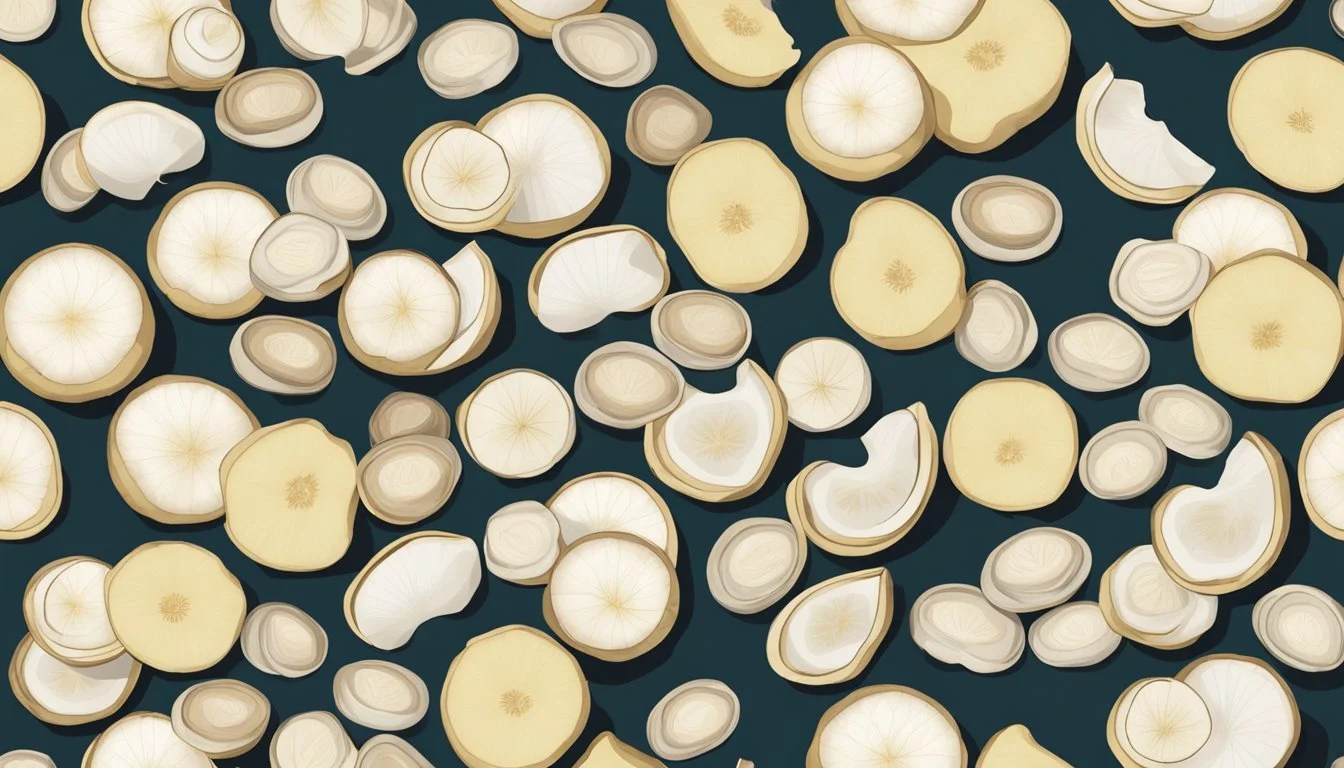Lotus root Substitutes
Best Alternatives for Cooking and Nutrition
When it comes to finding substitutes for lotus root, a versatile ingredient in Asian cuisine, there are several options that can offer similar textures and flavors. Burdock root is an excellent alternative to lotus root, especially in Japanese dishes, as it can be boiled, baked, or fried. Another fantastic option is water chestnut; it provides a similar crunch and can be easily incorporated into various recipes.
Jerusalem artichokes and salsify are also noteworthy alternatives, offering their unique flavors while maintaining a similar texture to lotus root. Particularly in Chinese and Japanese cooking, these substitutes can seamlessly replace lotus root in soups, stews, and stir-fried dishes. Each of these options ensures your dish retains its integrity while bringing new and exciting elements to the table.
For those looking for something slightly different yet effective, try incorporating turnip or parsnip. They may not have the iconic pattern of lotus root when sliced, but they provide comparable tastes and textures that work well in many culinary applications. This variety of substitutes ensures that even without lotus roots, your Asian-inspired dishes remain flavorful and authentic.
Understanding Lotus Root
Lotus root is a versatile rhizome with a unique nutritional profile, a wide array of culinary uses, and rich cultural significance, particularly in Asian cuisine.
Nutritional Profile
Lotus root is packed with essential nutrients. It is a good source of dietary fiber, which aids in digestion and helps maintain a healthy weight. The root also contains noteworthy amounts of vitamin C and vitamin B6, along with iron and potassium.
Moreover, lotus root provides moderate amounts of protein and is low in calories, making it an excellent choice for those looking to maintain a balanced diet. Its high content of antioxidants further contributes to overall well-being and immune function.
Culinary Uses
In the kitchen, lotus root proves extremely versatile. It can be fried, stir-fried, steamed, baked, or pickled. The root's crisp texture makes it a popular ingredient in various dishes such as salads, soups, and stir-fried meals.
In Chinese and Japanese cuisine, lotus root is highly revered. It features prominently in traditional dishes and is often included in holiday foods like osechi ryori for the Japanese New Year. The root can be sliced thin and deep-fried into chips or simmered in soups for added nutrition and flavor.
Cultural Significance
The lotus root holds significant cultural importance, especially in Asian traditions. In Chinese culture, it symbolizes purity and luck, often appearing in festive dishes. In Japanese cuisine, it is an integral part of osechi ryori, symbolizing good fortune and a prosperous New Year.
Beyond its symbolic meanings, the lotus root is a staple in various regional cuisines across Asia, from Japanese to Indian, contributing not only to the culinary diversity but also to the cultural richness. Its long history of use underscores its valued status among diverse communities.
Lotus Root Substitutes
Finding a suitable substitute for lotus root can be important for those who cannot find this ingredient or want to explore alternatives. The following sections cover various substitutes specifically suited for different uses, from fresh alternatives to textural replacements and cooking techniques.
For Fresh Lotus Root
When fresh lotus root is unavailable, water chestnuts make an excellent substitute. They provide a similar crisp texture and mild flavor. Thinly sliced, they are great for stir-fries and salads.
Jicama is another option. Its crunchy and slightly sweet taste complements many dishes similarly to lotus root. It works well raw in salads or cooked in stir-fries.
Daikon radish can also be used, especially in Japanese cooking. It adds a refreshing, slightly peppery note when thinly sliced, perfect for cold dishes and pickling.
For Crunchy Texture
When the crunchy texture of lotus root is essential, water chestnuts again stand out as a prime substitute. Their firm, crunchy nature makes them perfect for stir-fries and soups.
Jicama also fits this requirement. Its juicy crunch remains intact whether it's raw or lightly cooked, making it versatile for salads and stir-fries.
Carrots and celery, though differing in flavor, can be used to add a similar crunch in both raw and cooked applications, from salads to braised dishes.
For Cooking Techniques
Substitutes often need to match the cooking techniques used for lotus root. Burdock root can be boiled, baked, or fried, similar to lotus root, and is especially favored in Japanese stews and stir-fried dishes.
Potatoes can perform well in dishes requiring boiling or frying. They absorb flavors well, making them a suitable alternative in soups and braised recipes.
Water chestnuts once again are useful here, particularly in stir-frying and making crunchy, batter-fried chips.
Substitutes in Asian Cuisine
In Asian cuisine, maintaining the authenticity of texture and flavor is crucial. Daikon radish is commonly used in Japanese and Korean dishes as a substitute for lotus root, offering a similar crunch and mild flavor.
Jicama provides a suitable alternative in dishes like Chinese salads or stir-fries, with its sweet and crisp qualities.
Burdock root is another traditional option, especially in Japanese cooking, like stews and kinpira (sautéed and simmered dishes). Its unique taste and texture make it an ideal substitute for pickled lotus root and other traditional preparations.
Cooking Tips for Substitutes
When using substitutes for lotus root, it is essential to pay close attention to preparation, storage, seasoning, and flavor pairing in order to achieve the best results in your dishes.
Preparation and Storage
Proper preparation begins with rinsing and peeling the substitute root vegetable. For example, burdock root and jicama should be rinsed well to remove any soil, and then peeled to get rid of their tough outer layer.
To maintain crispness, keep the prepped roots submerged in water with a splash of vinegar to prevent oxidation. Store them in the refrigerator if not using immediately. Drain them thoroughly before cooking.
Substitutes like turnip and parsnip should also be peeled and can be stored similarly. This method ensures that they remain ready for quick use and retain their texture.
Seasoning and Flavor Pairing
Seasonings play a crucial role in enhancing the flavors of lotus root substitutes. Using ingredients such as soy sauce, ginger, and a pinch of salt can complement the mild, slightly sweet flavors of the substitutes.
For a more complex taste, combining sugar and salt achieves a balanced savory and sweet profile. Adding ginger can also reduce any astringent taste.
Effective pairings include using salsify or parsnip in stews with mild flavor profiles, and adding flavors like mirin or soy sauce for additional depth. Given the versatile nature of these substitutes, they can be used in both savory and lightly sweet dishes depending on the seasoning used.
Alternative Ingredients in Recipes
For those seeking alternatives to lotus root in their culinary endeavors, several options exist that provide similar textures and flavors. These alternatives fall into two main categories: starchy substitutes and vegetable substitutes.
Starchy Substitutes
Starchy substitutes can mimic the texture of lotus root. Potatoes and sweet potatoes are excellent choices. Japanese sweet potatoes (Satsumaimo) provide a slightly sweet flavor, though they are not as crunchy. Regular sweet potatoes are also usable forms but might require adjustments with other seasonings like sugar or mirin to balance sweetness.
Water chestnuts offer a comparable crunchy texture. They remain crisp after cooking, making them a favorite in stir-fries and salads. Jicama can also be considered due to its crunchiness and mildly sweet taste. All these options provide a starchy element that works well in various dishes.
Vegetable Substitutes
In terms of root vegetables resembling lotus root, several options exist. Burdock root is one alternative rich in inulin and iron, often used in pickled form. Its bitterness can add a unique twist to recipes.
Turnips, salsify, and parsnips can fill the role of lotus root substitutes despite differences in flavor profiles. Celery and carrots also work, particularly in soups and stews where their flavor complements other ingredients.
Finally, daikon is a good choice for those seeking a smooth texture with a bit of crunch. These vegetable substitutes, while varying slightly in taste, offer flexibility in cooking techniques and help maintain the integrity of dishes requiring lotus root.
Where to Find Lotus Root and Its Substitutes
Lotus root, or Nelumbo nucifera, is a versatile ingredient that can be found in various retail spaces. Depending on your location, you might need to explore specific stores or online platforms to source fresh or substitute options.
Local Availability
In many regions, major grocery stores and specialized markets carry lotus root. Asian markets are a primary source, often providing fresh lotus root, especially in urban areas with diverse populations. It's commonly available in the produce section, either whole or pre-sliced.
Local organic stores occasionally stock lotus root, reflecting a growing trend toward unique and healthful vegetables. If fresh lotus root is not available, check for frozen or canned versions, which are viable substitutes for most recipes.
Substitutes like burdock root, water chestnut, and salsify might also be found in these outlets. Burdock root, in particular, is popular in Japanese and Korean stores. These stores cater to a clientele familiar with these ingredients and often carry them in various forms, such as pickled or pre-processed.
Online Retailers and Specialty Shops
For those unable to find lotus root locally, online retailers serve as a reliable source. Websites like Amazon and dedicated Asian grocery platforms often stock both fresh and preserved lotus root. Amazon tends to offer a wide variety of options, including international shipping for harder-to-find items.
Specialty shops focus on traditional and niche ingredients. Websites dedicated to Asian cuisine often provide detailed descriptions and usage tips, enhancing the shopping experience. Some of these retailers also have physical storefronts, searchable via social media platforms like Facebook, allowing users to check availability and reviews before purchasing.
Lotus root substitutes such as Jerusalem artichoke, burdock root, and water chestnut are also available through these online platforms. These retailers often provide detailed guidance on how to use these substitutes in various dishes.







